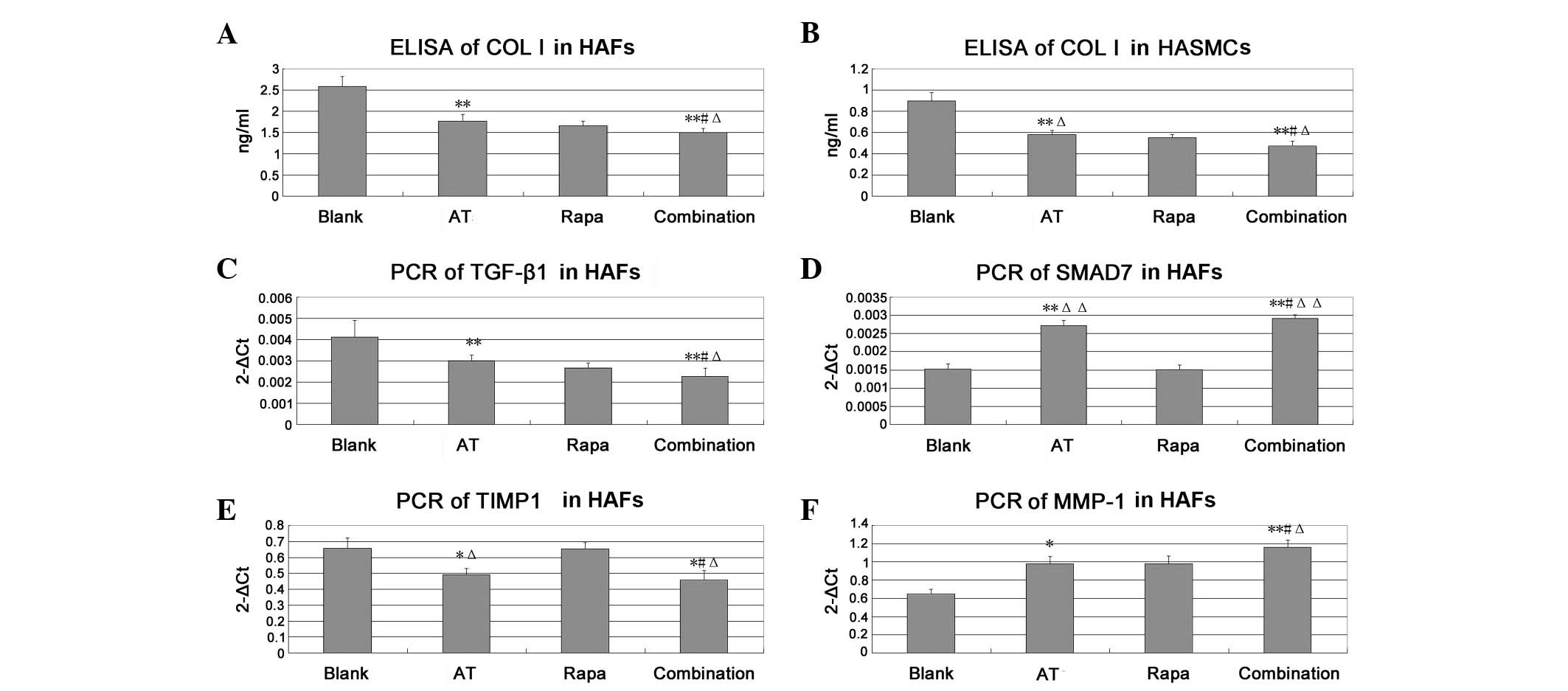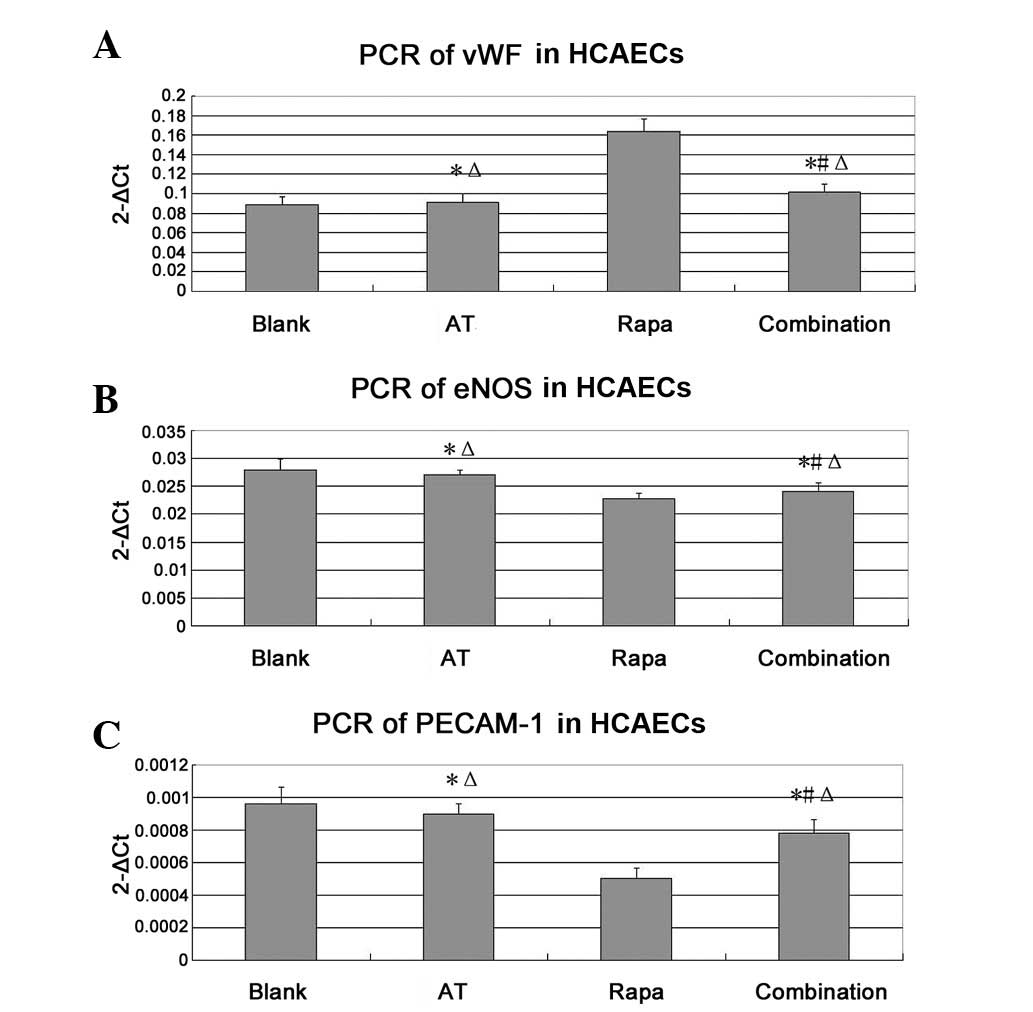|
1.
|
Mehran R, Dangas G, Abizaid AS, et al:
Angiographic patterns of ISR: classification and implications for
long-term outcome. Circulation. 100:1872–1878. 1999. View Article : Google Scholar : PubMed/NCBI
|
|
2.
|
Guo JS, Cheng CL and Koo MW: Inhibitory
effects of Centella asiatica water extract and asiaticoside
on inducible nitric oxide synthase during gastric ulcer healing in
rats. Planta Med. 70:1150–1154. 2004.
|
|
3.
|
Cheng CL, Guo JS, Luk J and Koo MW: The
healing effects of Centella extract and asiaticoside on
acetic acid induced gastric ulcers in rats. Life Sci. 74:2237–2249.
2004.PubMed/NCBI
|
|
4.
|
Al-Saeedi FJ, Bitar M and Pariyani S:
Effect of asiaticoside on 99mTc-tetrofosmin and
99mTc-sestamibi uptake in MCF-7 cells. J Nucl Med
Technol. 39:279–283. 2011.
|
|
5.
|
Dong MS, Jung SH, Kim HJ, et al:
Structure-related cytotoxicity and anti-hepatofibric effect of
asiatic acid derivatives in rat hepatic stellate cell-line, HSC-T6.
Arch Pharm Res. 27:512–517. 2004. View Article : Google Scholar : PubMed/NCBI
|
|
6.
|
Wijeweera P, Arnason JT, Koszycki D and
Merali Z: Evaluation of anxiolytic properties of Gotukola -
(Centella asiatica) extracts and asiaticoside in rat
behavioral models. Phytomedicine. 13:668–676. 2006. View Article : Google Scholar : PubMed/NCBI
|
|
7.
|
Kimura Y, Sumiyoshi M, Samukawa K, et al:
Facilitating action of asiaticoside at low doses on burn wound
repair and its mechanism. Eur J Pharmacol. 584:415–423. 2008.
View Article : Google Scholar : PubMed/NCBI
|
|
8.
|
Pan S, Li T and Li Y: Effects of
asiaticoside on cell proliferation and smad signal pathway of
hypertrophic scar fibroblasts. Zhongguo Xiu Fu Chong Jian Wai Ke Za
Zhi. 18:291–294. 2004.(In Chinese).
|
|
9.
|
Suwanabol PA, Kent KC and Liu B: TGF-β and
restenosis revisited: a Smad link. J Surg Res. 167:287–297.
2011.
|
|
10.
|
Chamberlain J, Gunn J, Francis SE, et al:
TGF-β is active, and correlates with activators of TGF-β, following
porcine coronary angioplasty. Cardiovasc Res. 50:125–136. 2001.
|
|
11.
|
Wolff RA, Malinowski RL, Heaton NS, et al:
Transforming growth factor-β1 antisense treatment of rat vein
grafts reduces the accumulation of collagen and increases the
accumulation of h-caldesmon. J Vasc Surg. 43:1028–1036. 2006.
|
|
12.
|
Shi Y, O’Brien JE Jr, Fard A and Zalewski
A: Transforming growth factor-β 1 expression and myofibroblast
formation during arterial repair. Arterioscler Thromb Vasc Biol.
16:1298–1305. 1996.
|
|
13.
|
Mallawaarachchi CM, Weissberg PL and Siow
RC: Smad7 gene transfer attenuates adventitial cell migration and
vascular remodeling after balloon injury. Arterioscler Thromb Vasc
Biol. 25:1383–1387. 2005. View Article : Google Scholar : PubMed/NCBI
|
|
14.
|
Galis ZS and Khatri JJ: Matrix
metalloproteinases in vascular remodeling and atherogenesis: the
good, the bad, and the ugly. Circ Res. 90:251–262. 2002.PubMed/NCBI
|
|
15.
|
Marx SO and Marks AR: Bench to bedside:
the development of rapamycin and its application to stent
restenosis. Circulation. 104:852–855. 2001. View Article : Google Scholar
|
|
16.
|
Kwon YS and Kim JC: Inhibition of corneal
neovascularization by rapamycin. Exp Mol Med. 38:173–179. 2006.
View Article : Google Scholar
|
|
17.
|
Vane JR, Anggård EE and Botting RM:
Regulatory function of the vascular endothelium. N Engl J Med.
323:27–36. 1990. View Article : Google Scholar : PubMed/NCBI
|
|
18.
|
Thanyasiri P, Kathir K, Celermajer DS and
Adams MR: Endothelial dysfunction and restenosis following
percutaneous coronary intervention. Int J Cardiol. 119:362–367.
2007. View Article : Google Scholar : PubMed/NCBI
|
|
19.
|
Inoue T, Croce K, Morooka T, et al:
Vascular inflammation and repair: implications for
re-endothelialization, restenosis, and stent thrombosis. JACC
Cardiovasc Interv. 4:1057–1066. 2011. View Article : Google Scholar : PubMed/NCBI
|
|
20.
|
Xie J, Li T, Qi S, Li Z, Liang H and Wu Y:
The effects of asiaticoside on fibroblasts in vitro culture.
Academic Journal of Sun Yat-Sen University of Medical Sciences.
22:41–43. 2001.(In Chinese).
|
|
21.
|
Qi SH, Xie JL, Pan S, et al: Effects of
asiaticoside on the expression of Smad protein by normal skin
fibroblasts and hypertrophic scar fibroblasts. Clin Exp Dermatol.
33:171–175. 2008. View Article : Google Scholar
|
|
22.
|
Nowwarote N, Osathanon T, Jitjaturunt P,
et al: Asiaticoside induces type I collagen synthesis and
osteogenic differentiation in human periodontal ligament cells.
Phytother Res. 27:457–462. 2013. View
Article : Google Scholar : PubMed/NCBI
|
|
23.
|
Wang J, Cheng XX, Yang RC, et al:
Modification of Centella asiatica compound on renal
cytokines expression profiles in mice models with focal
glomerulosclerosis. Chinese Journal of Clinical Pharmacology and
Therapeutics. 8:638–641. 2003.
|
|
24.
|
Zhou J, Jiang H, Yi L, et al: Experimental
study of the effect of asiaticoside on preventing restenosis after
percutaneous coronary intervention. Journal of Xi’an Jiaotong
University (Medical Sciences). 26:477–497. 2005.(In Chinese).
|













